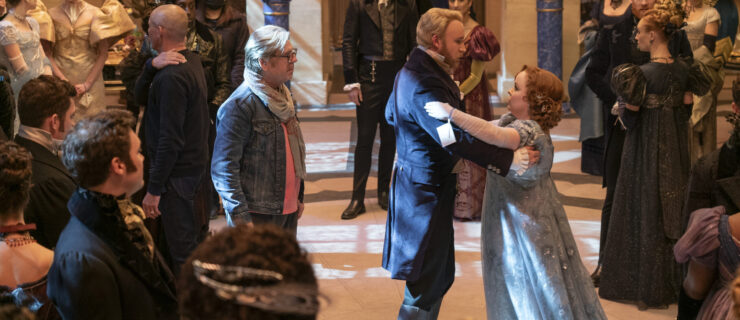Dancing It Forward
When dancer Georgia Bernbaum was in fifth grade, she participated in a supply drive for the Coalition for the Homeless of Central Florida, a homeless shelter near her Orlando, FL, home. “I started thinking about what it would be like to stay at the shelter, and all the things I’d miss,” she recalls. Then it dawned on her: “The kids don’t get to take dance lessons like I do.”
Fast-forward two years, and Georgia, now 12, is on her way to changing that. In the fall of 2014, she established the Dance Happy Project, which brings dance training to children at the Coalition’s Center for Women and Families. Every three months, Georgia—
a modern dance student at the Center for Contemporary Dance in Winter Park, FL—hires instructors to lead a series of classes on site. And with, on average, more than 200 kids staying at the Coalition each night, the Dance Happy Project is making a big impact.
The Initiative
Georgia’s project started on a much smaller scale: fulfilling a community-service requirement for her upcoming bat mitzvah. “My mom suggested I do something with dance, since that’s what I love,” Georgia says. But while her mom thought Georgia might simply try raising money for one of her dance studio’s nonprofit programs, Georgia had another idea. “I told my mom my plan was to bring dance classes to the homeless,” she says.
Georgia’s mom figured they wouldn’t be able to just walk into the Coalition and lead classes—and she was right. Luckily, the center already had an arts education initiative in place, Art by Coalition Children (ABCs), which recruited professional artists to teach community classes in disciplines like photography and sculpture. Dance, however, was missing from the roster. “They had different programs for art and music, but you need cameras for filmmaking and pencils for art,” Georgia says. “All you need to dance is yourself. And you can carry dance with you your whole life.”
(Photo by Lisbet Photography, courtesy Elizabeth Bernbaum)
The Partnership
Georgia knew she couldn’t teach the classes herself. She approached her dance studio’s artistic director, Dario J. Moore, for guidance. “He loved my idea,” Georgia says. (Moore has lots of experience teaching dance in public schools and in underserved areas.) Georgia formed a partnership with the studio, with Moore agreeing to provide instruction for the outreach classes.
October 3, 2014, marked the newly named Dance Happy Project’s first class at the Coalition. Twenty kids—plus Georgia—attended. “Everyone thought I was just another kid taking the class, but Dario introduced me as his boss lady!” Georgia says. “During the class, everyone got to make up their own dance, and I could see the kids having fun.”
The Next Steps
Georgia didn’t want to stop there. ABCs’ program leaders suggested the Dance Happy Project hold a series of four classes (one per week) four times a year. It was to be the center’s first ongoing ABCs program—if Georgia could sustain it. Though she had
received two grants to help pay the dance teachers, she knew she needed to raise more money to keep the project going.
The solution? On February 9, 2015, Georgia hosted a benefit concert featuring a silent auction and performances by nine local dance companies, including members of Orlando Ballet. It took months to prepare. “I wrote to more than 100 artists and asked if they’d be willing to donate a piece of art for the auction,” Georgia says. Thanks to her diligence, items up for auction included signed costume design sketches from Newsies and Wicked on Broadway, Disney’s Frozen on Ice and The Washington Ballet’s ALICE (in wonderland).
The Outlook
Proceeds from February’s fundraising event totaled more than $10,000, enough to continue the Dance Happy Project for at least five more years. Georgia also plans to hold another benefit concert next year. “She got a lot of requests to do it again—and many dancers who didn’t perform this time asked to be on next year’s program,” says Elizabeth Bernbaum, Georgia’s mom. “They all wanted to help.”
Georgia also has dreams of expansion. She hopes to bring the Dance Happy Project to local Boys & Girls Clubs, and to make sure it can continue after she goes to college. Ultimately, she’d like to replicate the program in other underserved communities across the country. “It can be pretty intimidating to ask people to participate and help,” she says. “But I learned not to be shy. You’ll always have more success when you just go straight for something you want.”



